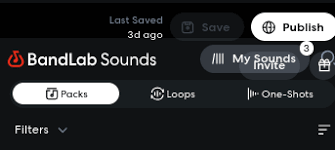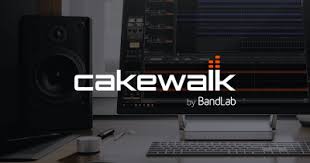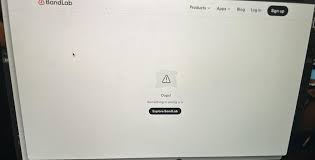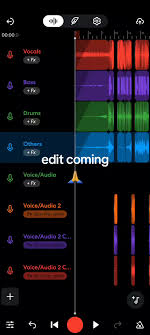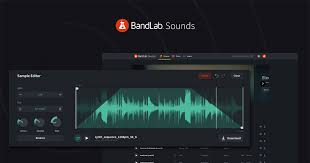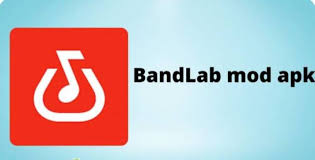If you’re producing music on BandLab and wondering, is it possible to add plugins to BandLab, you’re not alone. Many users—especially those transitioning from desktop DAWs like FL Studio, Ableton Live, or Logic Pro—are used to working with VST plugins and want to extend BandLab’s built-in tools.
So, what’s the real answer?
No, you cannot install or run third-party VST/AU plugins directly inside the BandLab Mix Editor (the web-based version). But—yes, there are workarounds and alternative methods to use plugin-powered audio in BandLab, especially if you're using BandLab Assistant or pairing with another DAW.
This post will break it all down in detail: what plugins are, how BandLab handles them, and how you can still get that “plugin sound” using smart techniques—even without direct plugin support.
What Are Plugins, and Why Do Producers Use Them?
Plugins—especially VST (Virtual Studio Technology) plugins—are third-party software extensions that provide:
Virtual instruments (synths like Serum, Massive, Vital)
Audio effects (EQs, compressors, reverbs, delays)
Creative tools (vocal processors, pitch shifters, samplers)
In most professional DAWs, you can install and load these plugins into your project. They’re essential for expanding your creative toolkit and getting that polished, industry-standard sound.
Can You Use Plugins in BandLab’s Mix Editor?
Let’s answer the main question head-on:
Is it possible to add plugins to BandLab’s Mix Editor?
Unfortunately, no, not directly.
BandLab is a cloud-based DAW, which means it runs entirely in your browser (Chrome, Safari, etc.). It doesn't support traditional VST/AU plugin integration, because:
Web browsers can’t run .dll/.vst/.component files
Real-time plugin processing requires local CPU power, not browser-based streaming
However, BandLab offers its own native effects and instruments that act like plugins. You’ll find:
Reverb, delay, flanger, chorus, distortion
Compressors, EQs, limiters
Amp sims for guitar and bass
Preset-based synthesizers and drum kits
These aren’t downloadable plugins—but they’re powerful enough for many users, especially beginners.
What About BandLab Assistant – Can You Use Plugins There?
Now here’s where it gets interesting.
BandLab Assistant is a downloadable desktop application that connects your BandLab account to your local machine. While BandLab Assistant itself does not allow VST plugins directly, it serves as a bridge to another DAW: Cakewalk by BandLab.
Cakewalk by BandLab = Full Plugin Access
Cakewalk is a professional-grade DAW for Windows users (formerly SONAR) that does support VST plugins natively. And it’s completely free, thanks to BandLab Technologies.
With Cakewalk, you can:
Install and use VST2/VST3 plugins
Work with audio and MIDI routing
Use professional mixing tools
Save and export your sessions to later upload to BandLab if needed
So, while you can’t run plugins directly in BandLab’s browser DAW, you can use them through Cakewalk and then:
Bounce your plugin-enhanced audio to WAV/MP3
Import that audio into your BandLab project for further editing or collaboration
How to Add Plugin Audio to a BandLab Project (Workaround)
Here’s a simple step-by-step process:
Step 1: Create Audio in a Plugin-Friendly DAW
Use Cakewalk, FL Studio, or Ableton Live to:
Load your VST plugins
Build your synth/melody/vocal effect chain
Render the track to WAV
Step 2: Upload to BandLab
Open your BandLab Mix Editor
Click + Add Track → Import Audio
Select your exported plugin-rendered audio file
Position it within your arrangement
Now you have “plugin-processed” audio inside BandLab, even though the plugin didn’t run inside BandLab itself.
What About Mobile: Can You Add Plugins on BandLab App?
No—BandLab’s mobile app (iOS/Android) also does not support plugins. However, it includes a range of built-in FX such as:
Vocal AutoPitch
Amp Simulators
Delay, reverb, and filters
These built-ins are optimized for mobile performance and do mimic some plugin effects, especially for quick demos or mobile beatmaking.
Alternative Plugin-Like Tools Inside BandLab
If you're looking for plugin-like tools within BandLab, here’s what you can use:
| Built-In Tool | Acts Like | Use Case |
|---|---|---|
| AutoPitch | Antares Auto-Tune | Vocal tuning and pitch effects |
| EQ-3/Graphic EQ | FabFilter Pro-Q | Tone shaping, mix balancing |
| Reverb FX | Valhalla Room | Spatial effects for vocals/instruments |
| Mastering Presets | Ozone Elements | One-click mastering styles |
Community Tip: Use Splice or Loopcloud with BandLab
If you rely on sound design or plugin instruments (like Serum or Massive), another smart workaround is using Splice or Loopcloud:
Build a melody or sample using plugins in your DAW
Export the loop
Drag into BandLab as a sample
While BandLab isn’t plugin-friendly natively, it works well with loop-based production workflows—especially if your plugin work is done externally.
FAQ: Plugins and BandLab
Can I install VST plugins in BandLab directly?
No, BandLab’s Mix Editor (browser version) doesn’t support VST or AU plugin integration.
Can I use plugins with BandLab Assistant?
Not directly—but you can use Cakewalk by BandLab via BandLab Assistant, which supports full VST plugin use.
Is there a plugin version of BandLab?
No, BandLab is a web app and mobile app. There is no plugin form of BandLab itself.
How do pros use plugins with BandLab?
They use external DAWs (like Cakewalk or FL Studio), bounce the plugin-processed audio, and import it into BandLab for collaboration or publishing.
Does BandLab plan to support plugins in the future?
As of now (2025), no official announcement has been made regarding plugin support in BandLab’s web app.
Final Thoughts: Is It Possible to Add Plugins to BandLab?
Directly? No. Creatively? Absolutely.
If you’re wondering is it possible to add plugins to BandLab, the answer depends on your approach. The web and mobile versions of BandLab don’t support plugins, but:
You can use Cakewalk by BandLab for full plugin support
You can export audio from plugin-friendly DAWs and bring it into BandLab
BandLab’s native FX and instruments offer simplified plugin-like functionality
For beatmakers, singers, and mobile producers, BandLab remains one of the most accessible free DAWs. And if you need plugin power? Just extend your workflow using Cakewalk or another desktop DAW, then loop it back into BandLab.
Learn more about AI MUSIC

